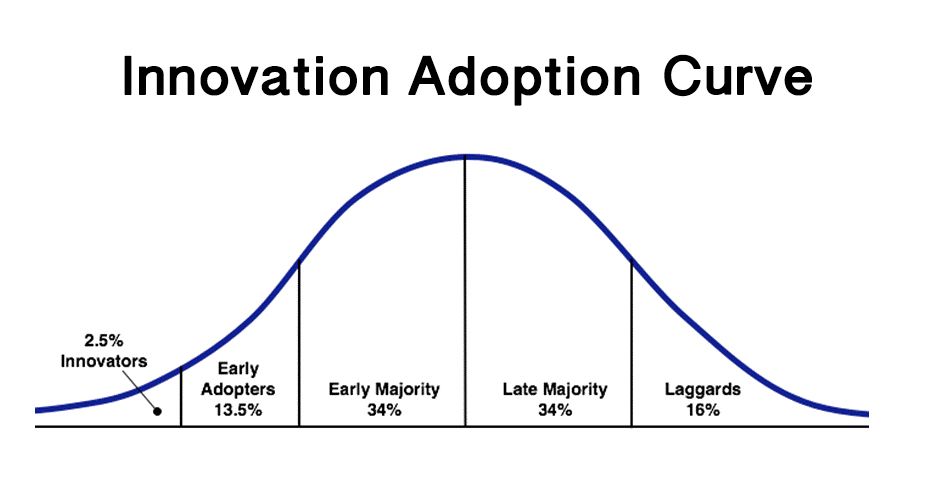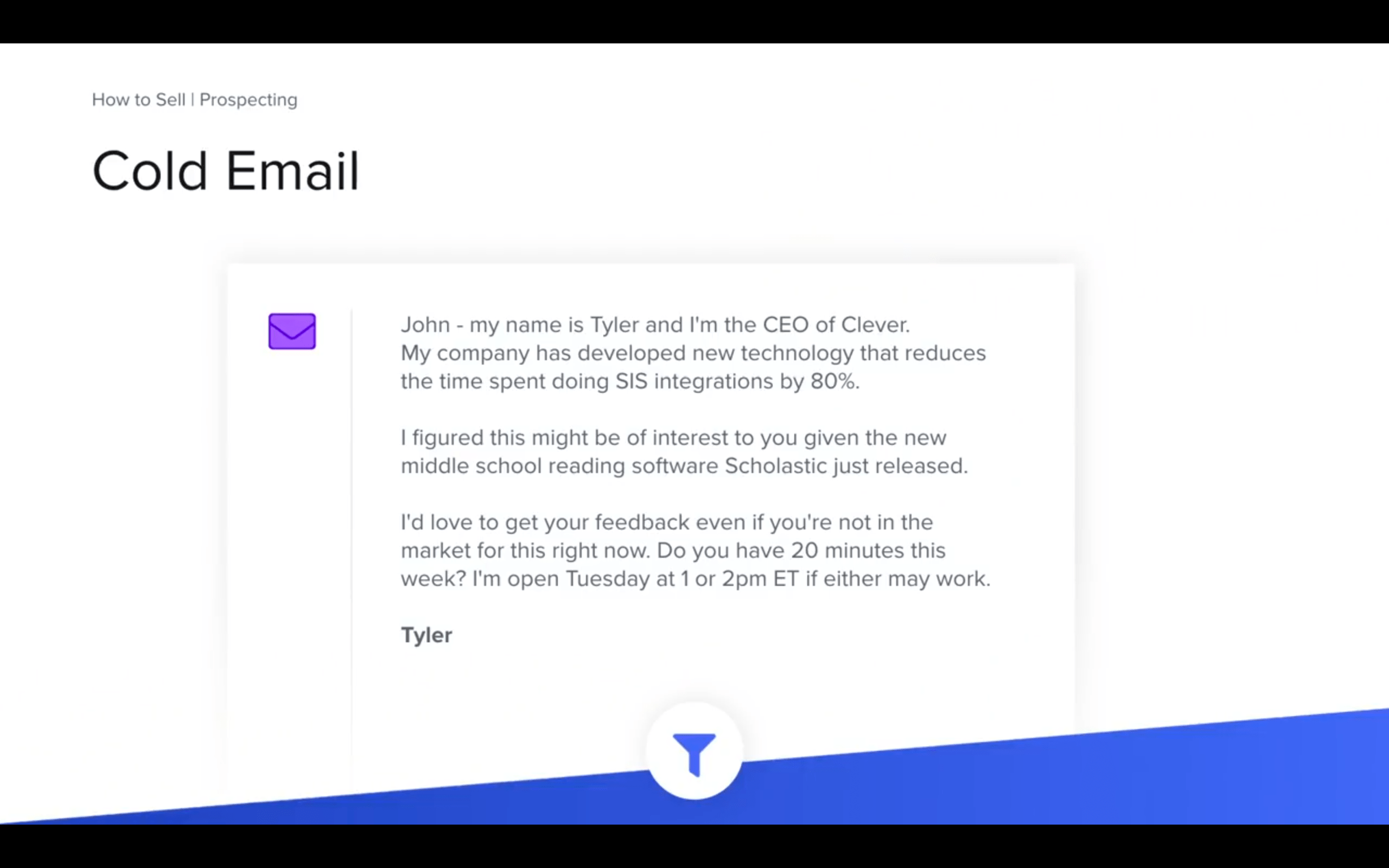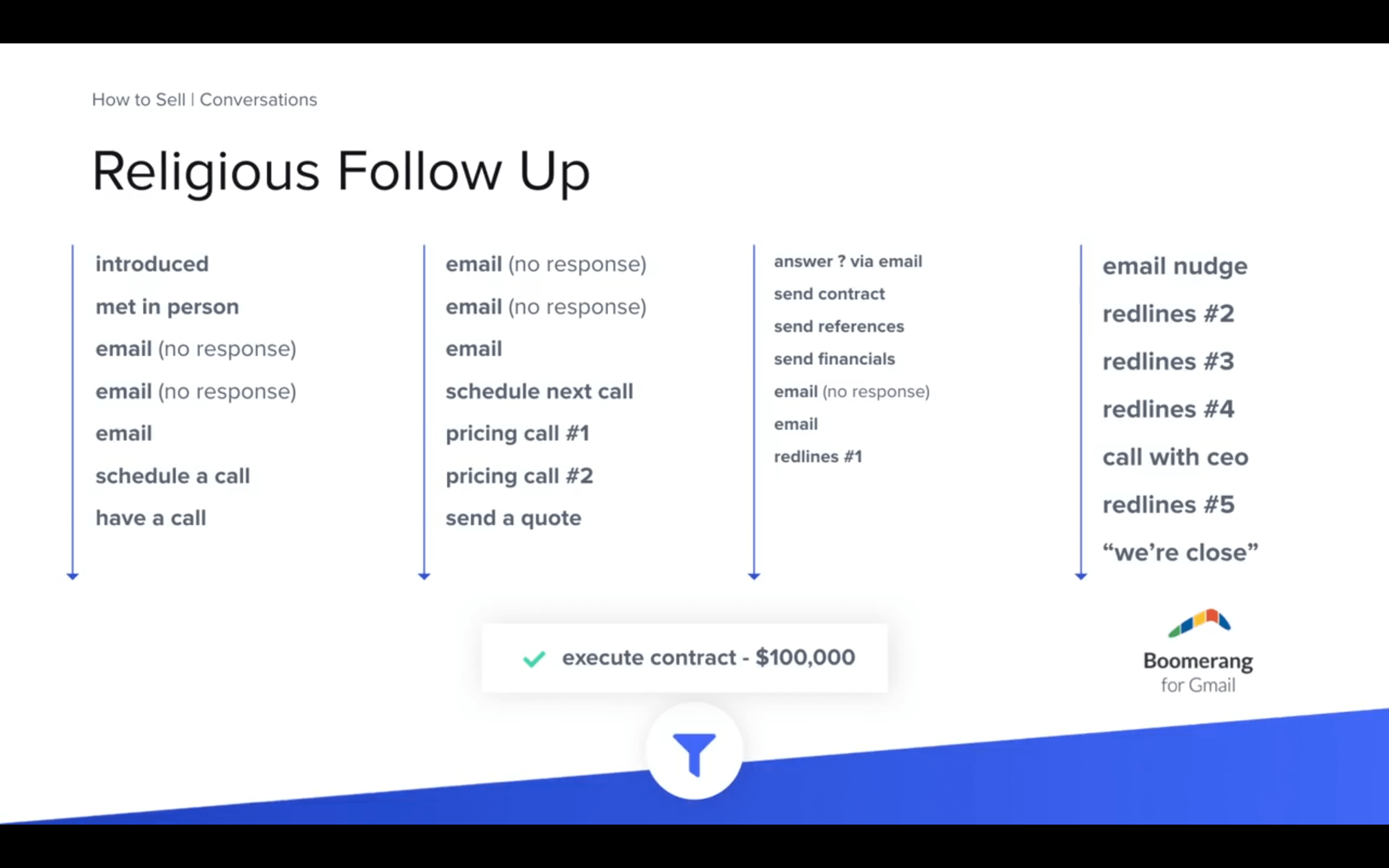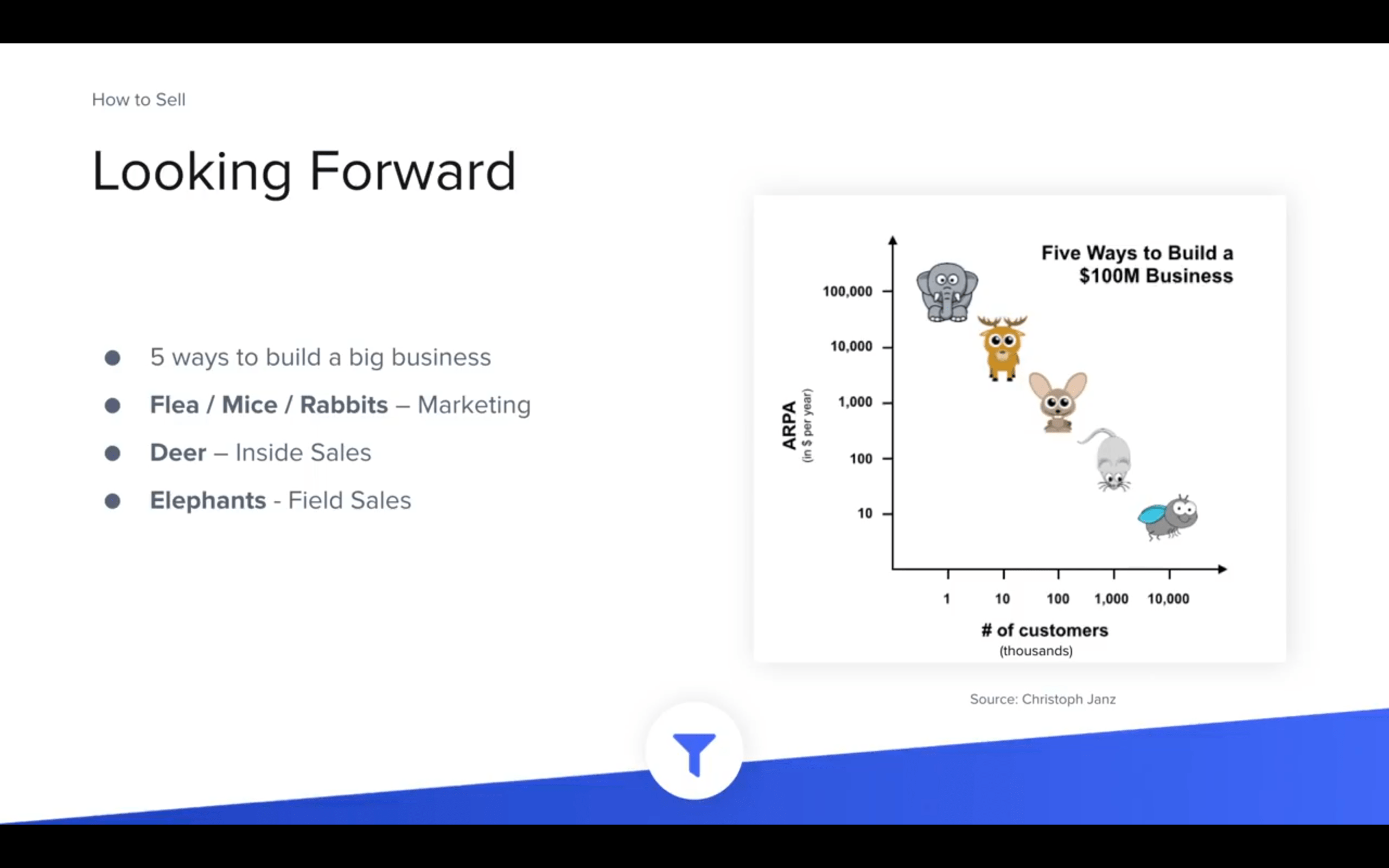Tyler Bosmeny, CEO and Co-founder of Clever gave a great talk at Startup School on how to approach sales as a freshly minted company.
He talks about his experience of going from 0 to \$1 Million in revenue doing high-touch sales in a B2B enterprise environment. Most of it is applicable to a lower-touch kind of sales as well, though.
These are my notes of it.
How to Sell
First things first: Don’t expect sales to be like in the movies. You’re probably not Don Draper and you don’t need to be.
He put out four steps in the sales cycle:
- Prospecting -> Finding potentially interested people in your product
- Conversations -> How to talk to them
- Closing -> Close the deal
- Promised land -> You’re making revenue!
Prospecting
Your job is to find the innovators, the ones that are interested in trying out new solutions to their problems. Try to talk to 100 companies or more. It’s a numbers game.

How to find those people?
Top 3 methods:
- Your network
- Conferences
- Cold emails
Your Network
This point is relatively clear. Talk to friends, family, friends of friends, acquaintances, your plumber, etc. Think of who might know someone from your target industry.
Conferences
No, not the big ones everyone thinks about first. The small ones, outside of major cities, in hotel rooms.
Figure out the top (might be 10 or less) industry conferences. Ask people in the industry you know where they go. The trick is not to just attend:
Find a list of people attending.
How? Be creative: write the organizers, read the website, maybe LinkedIn.
Now, email them in advance. Something like “Hey, i saw you will go to xyz conference too. We have this thing, i’d like to show it to you, do you have time for a chat?
Write every person you can find. Tyler has a goal of booking the entire day in 30 minute increments of talking to potential users. This could be your most productive days of the year. Every evening you’ll be exhausted but energized from all the feedback you’ll be getting.
Cold Email
Cold calls are mostly out but cold emails can still work. Most of them are bad, though. Too long, not personalized, not actionable, plain boring.
They don’t have to be. See an example in the next screenshot. Remember, all you want is a conversation, not a sale.

Conversations
You found someone interested in chatting with you.
Now what?
In the ensuing conversation, try to shut up and listen. The best salespeople are world class listeners, not sweet talkers. Your goal is to build relationships, understand their problems and their needs. Definitely try to talk less than your prospect. UberConference even sends you an email after the call where you can check how much you talked vs your partner (see the following image).

Questions could be:
- “tell me about the problem you’re having. how do you solve it today?
- why did you even take my call?
- What would your ideal solution look like?”
Closing
The next phase is closing the deal. You should always be following up. If you don’t hear anything, try again around 5 or 6 days later. If they haven’t explicitly said no, assume they are just busy. But if you write them 8 or more times without hearing anything back it’s time to take the loss. Remember to be thoughtful and personalized in your follow-ups. Don’t just blast them with a MailChimp autoresponder.
The following is a picture of how the sale of a 100k customer came to be for Tyler’s company.

Another thing: No’s are good. Startups don’t have infinite resources and you can’t spend months trying to convince every prospect. Sometimes you just have to drive conversations to a quick yes or no so you have time to service the other leads in your pipeline.
Also, you don’t discover product-market fit from no’s. There are many reasons why people don’t buy in the end. Maybe they are not an early adopter like you thought and they want a more mature solution. Maybe they need to focus on other things in the company right now.
The only sign of product-market fit are the yesses you get, not the nos.
Closing trap: Red Lining
Once you’re getting close to the sale you need a sales agreement. You can download a free one from Y Combinator’s webiste. Usually this agreement goes from your lawyer to their lawyer and they strike out passages they don’t like. This is called red-lining and depending on how many rounds the document makes can take quite some time. Don’t haggle too much over small things. Early customers are very valuable so don’t go through 4,5,6 revision steps but rather make concessions.
Closing trap: Just One More Feature
Some customers say they would buy if you had this one little extra feature. It hurts but treat it like it’s probably still a no from their side. They will probably be requesting another feature, and another one after that. Don’t build features for every single customer, your software will become bloated and hard to maintain.
For the first or second customer, though, do what it takes to make the sale..
Closing trap: Free Trials
(This definitely only concerns enterprise sales. Smaller SaaS products almost always have a free trial period.)
Don’t lose too much time with people why “want to try it first”. You need commitment and validation to see if your idea has traction, a free trial doesn’t give it. Do annual agreements only, with a 30 day money back guarantee.
Q & A
Choose big, prestigious or smaller companies?
Optimize for speed. Depending on who needs your product the most but usually smaller companies are better because you can close faster. Prestige (case studies or logos on your website) is overrated.
How to find your price point?
They guessed. Try closing a deal at a price that feels good, then double it for next one and see what happens. Just believe in your price but iterate on it.
What about cheaper products (around 50\$/Month)?
Raise prices or go for other tactics like demand generation, email campaigns, self-service signups and referral codes. High-touch sales are not scalable in this price range.
Read Christoph’s article about the five ways to build a \$100 million business.

When to hire Sales People?
Don’t hire until you did it on your own. You don’t know the core skills you need. Is it going to be a lot of traveling or phone calls or emails?
Look for renaissance sales people that love to figure things out. They don’t necessarily have to have industry knowledge already.